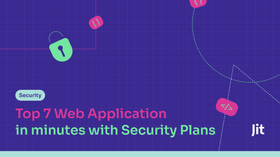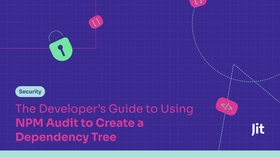Top 10 Container Scanning Tools for 2025
Updated July 14, 2025

Containers have revolutionized cloud computing, making it easier to build, deploy, and run applications in different environments. But this flexibility comes with unique risks: With containers, vulnerabilities can spread rapidly across multiple systems and compromise entire infrastructures.
Due to inherited dependencies, containers may have hundreds of vulnerabilities, many of which could be decades old and often go undetected until it’s too late. As DevOps pipelines become more complex, you need purpose-built container scanning solutions for modern cloud stacks. These solutions continuously scan images for known CVEs, flag misconfigurations, and ensure compliance across build, test, and runtime stages.
The Good and Some Ugly of Containers
Containers pack software applications into isolated environments, allowing them to run consistently across different systems and platforms.
One key benefit of containers is their ability to provide a consistent, isolated environment for application development, testing, and deployment. DevOps teams can quickly replicate the same environment across different systems, reducing the risk of configuration drift and ensuring that applications run as expected.
Take the development of microservices-based applications, for instance. Containers provide a way to package and deploy individual microservices as isolated units, making it easier to manage and maintain the various components of a microservices-based application.
However, they can pose security risks if they are not adequately managed. Containers share the host system’s kernel, meaning that a single misconfiguration, such as running containers with excessive privileges, can allow an attacker to escape the container’s isolation and access the host or other containers.
This risk compounds when outdated or vulnerable base images are used or known CVEs in dependencies are left unpatched. Oversights like neglecting to enforce an application security policy can also lead to lateral movement or data exfiltration.
What is a container scanning tool?
A container scanning tool is software that helps identify and prevent security vulnerabilities in container images and running containers. These tools analyze the content of the container images and compare it against a database of known vulnerabilities. They often integrate with container registries (like Docker Hub or Amazon ECR) to automatically scan images as they’re built or pushed.
The goal is to identify security risks before the containers are deployed into production, such as outdated packages, missing patches, or unsecured configurations like a lack of Kubernetes role-based access control (RBAC).
It's important to note that a container image is a read-only template used to create containers, while a container is a runnable instance of a container image. The scanning tool analyzes the container image before the container is made and can scan running containers to ensure their security.
Some common container security vulnerabilities and attacks include privilege escalation, data theft, and malicious code injection. Additionally, container images can be vulnerable to tampering, misconfigured security settings, and malicious third-party components. A container scanning tool can help detect and prevent these vulnerabilities from being exploited.
Container Scanning Tool Benefits
Container scanning tools offer more than surface-level vulnerability detection. They deliver deep, container-specific insights that traditional AppSec tools often miss. These platforms inspect container images at build time to uncover vulnerable base layers, misconfigured Dockerfiles, outdated language libraries, and embedded secrets that can compromise the entire runtime environment.
They also trace vulnerabilities to their originating packages or layers, helping teams quickly pinpoint root causes. Some tools even provide real-time runtime visibility, allowing organizations to detect drift between scanned images and what’s running in production. By aligning scanning results with specific images, layers, and orchestrator metadata (like Kubernetes deployments), these tools enable highly targeted remediation and more intelligent prioritization, which are essential in fast-moving CI/CD workflows.
- Improved visibility into the container security posture
- Flagging specific containers for remediation
- Increased monitoring of known-vulnerable containers
- Enhanced security and compliance
- Better resource utilization
5 Key Features to Look for in a Container Scanning Tool
- Compatibility: The tool should be compatible with the type of containers you use, including the container format, platform, and runtime environment.
Detection rates: The tool should have reasonable detection rates for known vulnerabilities and should be able to identify new security threats. A good detection rate typically exceeds 90–95% for known vulnerabilities, while poor detection rates fall below 80%, increasing the risk of missed threats and false security.
Runtime scanning: The tool should be able to monitor containers during runtime when the containers are actually in use.
Unified security platform: Choose a container scanning tool that integrates with other product security scanners to centralize visibility, streamline workflows, and enforce consistent security policies across your development stack.
- Auto-remediation: The tool should have auto-remediation capabilities, allowing you to fix vulnerabilities automatically without manual intervention.
10 Top Container Scanning Tools for 2025
1. Jit
Pros:
Seamless GitHub integration with a security-as-code model
Covers full-stack AppSec, including containers
AI-powered prioritization and auto-ticketing
Developer-friendly UX for rapid adoption
Cons:
Container scanning depends on integrated tools, not native ones.
May require setup time to fine-tune tool orchestration
Four Key Things to Know:
Full-stack security coverage: Includes SAST, SCA, DAST, secrets, IaC, container scanning, SBOMs, and more, all orchestrated from one platform.
Auto triage via AI Agent security: Uses intelligent agents to prioritize vulnerabilities based on exploitability and runtime context.
Developer-centric experience: Integrates natively with GitHub and CI/CD, enabling in-PR scans and automated feedback without disrupting workflows.
Automated remediation workflows: Creates tickets and suggests fixes when new issues are introduced, based on customizable severity thresholds.
2. Anchore
Pros:
Strong SBOM and policy enforcement
High accuracy with minimal false positives
Rich API and CLI for automation
Kubernetes image scanning support
Cons:
UI is less intuitive than some competitors
The policy engine can be complex for new users
Four Key Things to Know:
Custom policy engine: Fine-grained rules help teams reduce false positives and enforce security baselines across environments.
Software Bill of Materials (SBOM) management: Generates and validates SBOMs in SPDX and CycloneDX formats to improve transparency and compliance.
Kubernetes image scanning: Integrates with Kubernetes for pre-deployment security checks and continuous monitoring.
Flexible automation tools: Offers CLI and API support to embed scanning and policy evaluation directly into CI/CD pipelines.
3. Sysdig
Pros:
Unified CNAPP with deep container insights
Runtime threat detection
Strong Kubernetes monitoring capabilities
Supports forensics and troubleshooting
Cons:
Heavier infrastructure footprint
May require cloud-native expertise for full utility
Four Key Things to Know:
Cloud-native security platform: Protects containers, Kubernetes, and cloud workloads through a unified CNAPP approach.
Runtime threat detection: Identifies malicious behavior and policy violations in real-time, not just during build.
Built-in vulnerability management: Continuously scans container images and maps risks to running services.
Operational visibility: Combines security insights with monitoring and troubleshooting for full-stack observability.
4. Trivy
Pros:
Lightweight and easy to use
Covers OS packages, language libraries, and IaC
Integrates smoothly with Docker, GitHub Actions, Kubernetes, and CI/CD pipelines
Broad community support, as it is open-source
Cons:
Less policy customization compared to enterprise tools
Requires manual integration into pipelines
Four Key Things to Know:
Comprehensive open-source scanning: Covers OS packages, language dependencies, IaC, container images, and VMs.
No external dependencies: It doesn’t require setting up or maintaining databases and runs cleanly on any system.
SBOM generation included: Outputs SPDX and CycloneDX SBOMs to support modern software supply chain practices.
CI/CD integration ready: Compatible with Docker, GitHub Actions, GitLab CI, and other standard development tools.
5. Spectral
Pros:
Real-time secret detection with low false positives
Integrates with major VCS and cloud tools
SOC 2 and ISO compliance support
Fast and lightweight scanning
Cons:
Not a full vulnerability scanner (no CVE scanning)
Premium features gated in enterprise plans
Four Key Things to Know:
Secrets and key detection: Focuses on preventing data leaks by scanning for API keys, credentials, and tokens.
Real-time alerts with low noise: AI-driven engine minimizes false positives, reducing alert fatigue for devs.
Broad VCS and cloud support: Works across GitHub, GitLab, Bitbucket, AWS, Azure, and more.
Compliance-friendly outputs: Helps with SOC 2 and ISO 27001 reporting through automated classification and tracking.
6. Snyk
Pros:
Deep CI/CD and IDE integration
Support for developer tools, including those used for unit testing frameworks
Real-time scanning with fix suggestions and auto-patching
Great UX for developers
Cons:
Enterprise pricing can be high
Requires login/cloud connection for full features
Four Key Things to Know:
Built-in CI/CD integrations: Scans early in the SDLC with plugins for Jenkins, CircleCI, GitHub, GitLab, etc.
Fixes and patch suggestions: Highlights specific fixes and upgrade paths for vulnerable components.
Compliance and policy controls: Supports PCI, SOC 2, HIPAA, and more with built-in templates and audit reports.
Developer-first design: Simple CLI and rich UI built for fast, developer-friendly scanning.
7. Kubescape
Pros:
End-to-end Kubernetes security coverage
Easy CLI and in-cluster scanning
Benchmarks like NSA-CISA and MITRE are integrated
Open-source and extensible
Cons:
Not ideal for non-Kubernetes container environments
The visual dashboard is still maturing
Four Key Things to Know:
End-to-end K8s security: Scans clusters, manifests, Helm charts, and running workloads.
Grype-powered image scanning: Identifies vulnerabilities in container images using a proven open-source engine.
Built-in security benchmarks: Evaluates configurations using NSA-CISA, MITRE, and other frameworks.
SBOM generation + supply chain checks: Tracks software components and dependencies in container images.
8. Lacework (now Lacework FortiCNAPP)
Pros:
Full CNAPP with multicloud visibility
Powerful behavioral analytics engine
Real-time anomaly detection
Unified compliance and runtime protection
Cons:
Complex platform with a learning curve
Heavier resource usage for large deployments
Four Key Things to Know:
All-in-one CNAPP solution: Combines CSPM, CWPP, CIEM, and Kubernetes security in one platform.
Behavioral analytics engine: Uses the Polygraph Data Platform to detect anomalies and lateral movement.
Automated IaC scanning: Identifies misconfigurations before cloud infrastructure is deployed.
Compliance at scale: Streamlines audits with built-in templates for HIPAA, PCI, SOC 2, and more.
9. Qualys
Pros:
Mature and proven enterprise-grade tool
Rich scanning depth with low system overhead
Integrates easily with Jenkins, GitHub Actions, and others
Strong software composition analysis and runtime enforcement
Cons:
UI is more enterprise-focused than dev-friendly
Limited OSS contributions/community interaction
Four Key Things to Know:
QScanner CLI tool: Lightweight scanner for embedding vulnerability and SCA checks in pipelines.
Runtime behavior tracking: Monitors containers for policy violations or abnormal behavior in production.
Kubernetes posture management: Assesses and enforces security benchmarks for K8s clusters.
Regulatory compliance monitoring: Continuously checks for file changes and misconfigurations related to standards like PCI DSS 4.0.
10. Root
Pros:
Optimizes containers for performance and security
Removes bloat from base images
Visualizes image content and changes clearly
Aggregates data from multiple scanners
Cons:
Does not scan for vulnerabilities natively
Focus is more on hardening than detection
Four Key Things to Know:
Post-scan optimization: Works alongside scanners to shrink images and remove risky components.
Container hardening automation: Eliminates unnecessary binaries and libraries to reduce attack surface.
Pipeline-friendly setup: Easily integrates with CI/CD for automated image optimization.
Insightful change tracking: Reports what was removed from images and why, making it ideal for audits and debugging.
Keeping Your Containers Secure
Container technology has brought significant benefits for organizations, but also introduces new security challenges that must be addressed. With the growing use of containers in cloud infrastructure, effective container scanning tools are essential to ensure that vulnerabilities are identified and remediated promptly.
Jit integrates with powerful open-source tools like Trivy for container vulnerability scanning and Gitleaks for detecting hard-coded secrets. These integrations enable automated scanning of container images and Dockerfiles within your CI/CD pipelines, providing real-time feedback and remediation suggestions directly in your development workflow.
With Jit, you can enforce security policies as code, prioritize vulnerabilities based on context, and maintain a strong security posture throughout your containerized applications. Start securing your containers with Jit today. Explore more here.
















